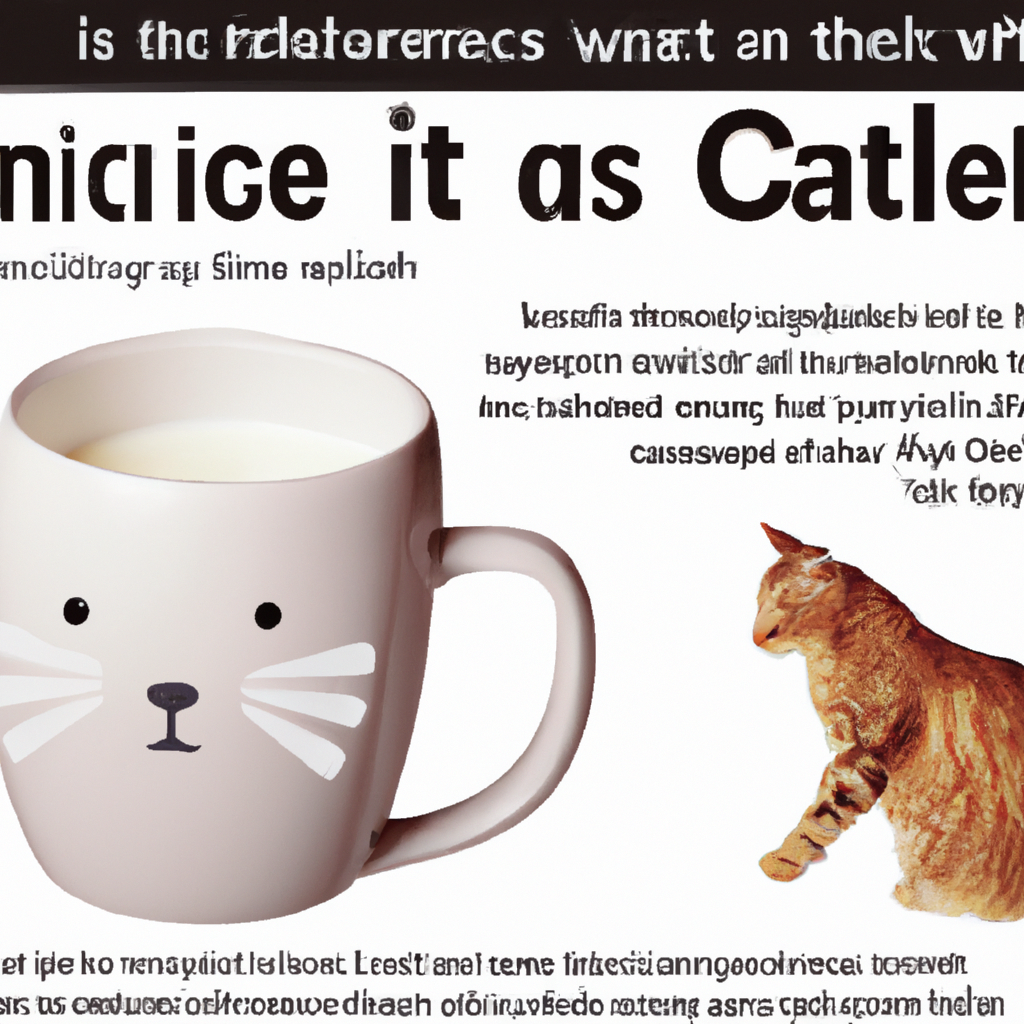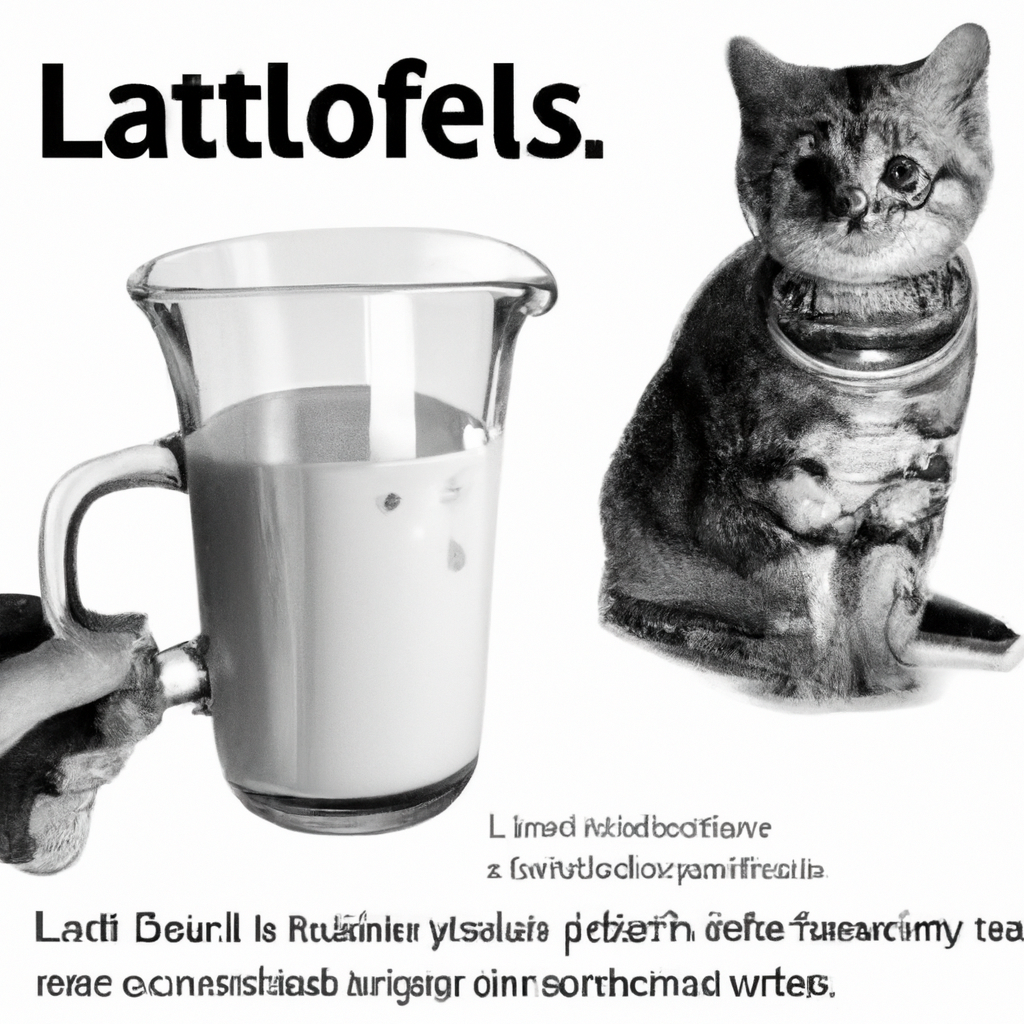Did you know that cats may have trouble digesting milk? If you’ve ever seen a cartoon where a cat eagerly laps up a bowl of milk, you might be surprised to learn that the reality is quite different. While cats may enjoy the taste of milk, their bodies are often unable to properly break down lactose, the sugar found in milk. This means that cats can be lactose intolerant, experiencing uncomfortable digestive symptoms like diarrhea and gas if they consume too much dairy. So, the next time you consider giving your furry friend a saucer of milk, you may want to think twice!
Overview of Lactose Intolerance
Lactose intolerance is a condition that affects both humans and animals, including cats. It occurs when the body is unable to digest lactose, which is the sugar found in milk and other dairy products. In this comprehensive article, we will explore what lactose intolerance is, its causes, symptoms, and prevalence.
What is Lactose Intolerance?
Lactose intolerance is a digestive disorder that occurs when the small intestine doesn’t produce enough lactase, the enzyme responsible for breaking down lactose. Lactose is primarily found in milk and dairy products. Without enough lactase, lactose cannot be properly digested, leading to uncomfortable symptoms.
Causes of Lactose Intolerance
Lactose intolerance can have different causes. In some cases, it is a result of genetics and is commonly seen in certain ethnic groups. Additionally, some individuals may develop lactose intolerance later in life due to a decline in lactase production. Certain medical conditions and digestive disorders, such as celiac disease or Crohn’s disease, can also contribute to lactose intolerance.
Symptoms of Lactose Intolerance
The symptoms of lactose intolerance can vary from mild to severe, depending on the individual. Common symptoms include bloating, abdominal pain or cramps, diarrhea, gas, and nausea. After consuming lactose-containing foods, these symptoms typically appear within 30 minutes to two hours.
Prevalence of Lactose Intolerance
Lactose intolerance is relatively common, affecting approximately 65% of the global population. The prevalence of lactose intolerance varies among different racial and ethnic groups. It is more prevalent in individuals of African, Asian, Hispanic, and Native American descent, while being less common in individuals of European descent.
Understanding Cats’ Digestive System
To understand lactose intolerance in cats, it is important to first have a basic understanding of their digestive system. Cats are obligate carnivores, meaning their bodies are naturally designed to digest and thrive on a diet primarily composed of meat.
Cats’ Natural Diet
In the wild, cats would prey on small animals, such as mice and birds. Their digestive system is adapted to digest high-protein, low-carbohydrate diets. This natural diet provides cats with the nutrients they need to thrive and maintain optimal health.
Cat Digestion of Milk
While kittens are able to digest milk during their early development stages, most adult cats lose the ability to digest lactose as they mature. This is because they naturally produce less lactase, the enzyme responsible for breaking down lactose, as they no longer rely on their mother’s milk.
Lactose in Cats’ Digestive System
When lactose enters a cat’s digestive system without enough lactase to break it down, it remains undigested in the gut. This can cause a range of digestive issues and discomfort, leading to lactose intolerance in cats.


Cats and Lactose Intolerance
Understanding that cats are primarily carnivores helps explain why lactose intolerance is common in these animals.
Cats as Carnivores
As obligate carnivores, cats have a digestive system and metabolism that are optimized for meat consumption. Their bodies are not adapted to efficiently digest carbohydrates or dairy products, including lactose-rich milk. Feeding cats a diet that aligns with their natural carnivorous needs helps maintain their overall health and digestion.
Lactose Intolerance in Cats
Lactose intolerance in cats occurs when they consume dairy products containing lactose. The lack of lactase in their digestive system leads to lactose maldigestion, resulting in gastrointestinal discomfort and other related symptoms.
Lactase Production in Cats
During a cat’s early development, lactase production is highest to facilitate the digestion of their mother’s milk. However, as kittens grow and transition to solid food, lactase production gradually decreases. This reduction in lactase production is a natural process that aligns with their dietary changes and results in lactose intolerance as they mature.
Signs of Lactose Intolerance in Cats
Recognizing the signs of lactose intolerance in cats is crucial to ensure their well-being and prevent discomfort.
Digestive Issues
Cats with lactose intolerance may experience digestive issues after consuming dairy products. These issues can include abdominal pain, discomfort, and general gastrointestinal distress.
Gas and Bloating
Excessive gas and bloating are common symptoms of lactose intolerance in cats. This can cause discomfort and may lead to changes in behavior or decreased appetite.
Diarrhea
Diarrhea is a typical symptom of lactose intolerance in cats. The undigested lactose in their digestive system can draw water into the intestines, leading to loose and watery stools.
Vomiting
In severe cases of lactose intolerance, cats may also experience vomiting. This can be a sign of a more severe reaction to lactose and should be addressed promptly by a veterinarian.


Dealing with Lactose Intolerance in Cats
If your cat is lactose intolerant, there are steps you can take to manage their condition and ensure they remain healthy and comfortable.
Avoiding Dairy Products
The first and most crucial step is to eliminate dairy products from your cat’s diet. This includes milk, cheese, and other lactose-containing dairy items. Opting for lactose-free alternatives is essential to avoid triggering uncomfortable symptoms.
Offering Lactose-Free Alternatives
Fortunately, there are lactose-free alternatives available that can still provide the necessary nutrients without causing digestive distress. Look for specialized cat milk or lactose-free cat food options to ensure your feline friend receives proper nutrition.
Lactose Intolerance vs. Milk Allergy in Cats
Understanding the difference between lactose intolerance and milk allergy in cats is important for proper diagnosis and management.
Distinguishing between Lactose Intolerance and Milk Allergy
Lactose intolerance and milk allergy are two distinct conditions. Lactose intolerance is the inability to digest lactose due to reduced lactase production, while milk allergy is an immune response to proteins found in milk. While lactose intolerance is relatively common, milk allergy is less prevalent but can be more severe.
Symptoms of Milk Allergy in Cats
Milk allergy in cats can cause a range of symptoms, including itching, skin rashes, respiratory distress, and gastrointestinal issues. It is crucial to consult with a veterinarian for proper diagnosis if you suspect your cat may have a milk allergy.
Caring for Cats with Lactose Intolerance
When caring for a cat with lactose intolerance, there are several key considerations to ensure their well-being and overall health.
Consulting with a Veterinarian
If you suspect your cat has lactose intolerance, it is essential to consult with a veterinarian for proper diagnosis and guidance. They can help determine the best course of action and provide recommendations tailored to your cat’s specific needs.
Ensuring a Balanced Diet
Eliminating lactose from your cat’s diet should not compromise their nutritional needs. Work with your veterinarian to develop a balanced and appropriate diet plan, ensuring your cat receives all necessary nutrients. High-quality, protein-rich cat food that caters to their carnivorous nature is typically recommended.
Monitoring Your Cat’s Health
Regularly monitoring your cat’s health is crucial for identifying any potential issues related to lactose intolerance. Watch for changes in behavior, digestion, and overall well-being. If any concerns arise, do not hesitate to seek veterinary care.
Conclusion
Understanding lactose intolerance in cats is important for providing optimal care and maintaining their health. Cats, as obligate carnivores, are naturally lactose intolerant and should not consume dairy products. By recognizing the signs of lactose intolerance and making appropriate dietary adjustments, you can ensure your feline companion remains happy, healthy, and comfortable. Remember, consulting with a veterinarian is always recommended for personalized advice and guidance tailored to your cat’s individual needs.

